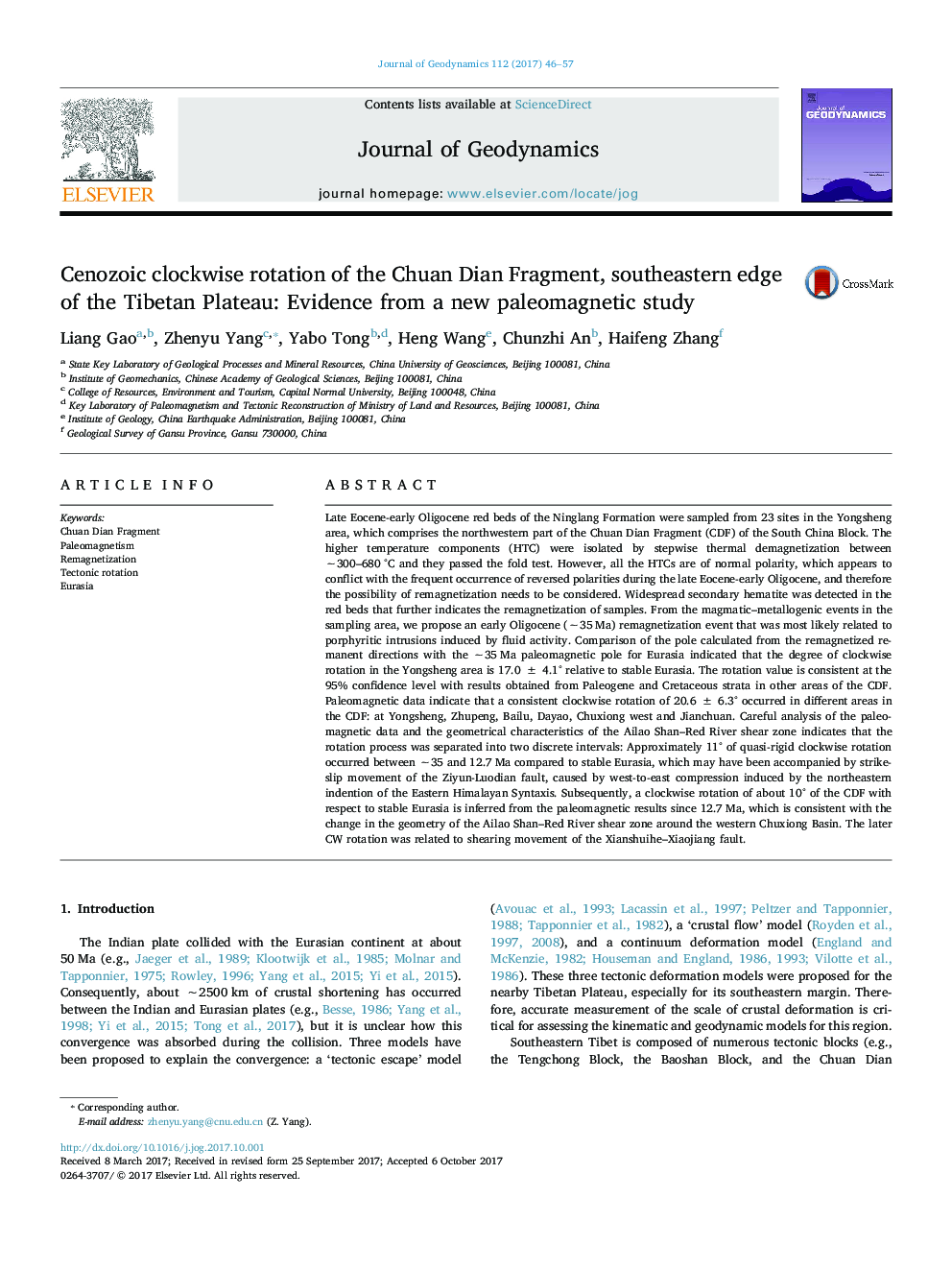| کد مقاله | کد نشریه | سال انتشار | مقاله انگلیسی | نسخه تمام متن |
|---|---|---|---|---|
| 8908441 | 1635738 | 2017 | 12 صفحه PDF | دانلود رایگان |
عنوان انگلیسی مقاله ISI
Cenozoic clockwise rotation of the Chuan Dian Fragment, southeastern edge of the Tibetan Plateau: Evidence from a new paleomagnetic study
ترجمه فارسی عنوان
چرخش عقربه ای عقربه ای قطعه چوان دیان، لبه ی جنوب شرقی فلات تبت: شواهدی از یک مطالعه جدید پائولو مغناطیسی
دانلود مقاله + سفارش ترجمه
دانلود مقاله ISI انگلیسی
رایگان برای ایرانیان
کلمات کلیدی
موضوعات مرتبط
مهندسی و علوم پایه
علوم زمین و سیارات
فرآیندهای سطح زمین
چکیده انگلیسی
Late Eocene-early Oligocene red beds of the Ninglang Formation were sampled from 23 sites in the Yongsheng area, which comprises the northwestern part of the Chuan Dian Fragment (CDF) of the South China Block. The higher temperature components (HTC) were isolated by stepwise thermal demagnetization between â¼300-680 °C and they passed the fold test. However, all the HTCs are of normal polarity, which appears to conflict with the frequent occurrence of reversed polarities during the late Eocene-early Oligocene, and therefore the possibility of remagnetization needs to be considered. Widespread secondary hematite was detected in the red beds that further indicates the remagnetization of samples. From the magmatic-metallogenic events in the sampling area, we propose an early Oligocene (â¼35 Ma) remagnetization event that was most likely related to porphyritic intrusions induced by fluid activity. Comparison of the pole calculated from the remagnetized remanent directions with the â¼35 Ma paleomagnetic pole for Eurasia indicated that the degree of clockwise rotation in the Yongsheng area is 17.0 ± 4.1° relative to stable Eurasia. The rotation value is consistent at the 95% confidence level with results obtained from Paleogene and Cretaceous strata in other areas of the CDF. Paleomagnetic data indicate that a consistent clockwise rotation of 20.6 ± 6.3° occurred in different areas in the CDF: at Yongsheng, Zhupeng, Bailu, Dayao, Chuxiong west and Jianchuan. Careful analysis of the paleomagnetic data and the geometrical characteristics of the Ailao Shan-Red River shear zone indicates that the rotation process was separated into two discrete intervals: Approximately 11° of quasi-rigid clockwise rotation occurred between â¼35 and 12.7 Ma compared to stable Eurasia, which may have been accompanied by strike-slip movement of the Ziyun-Luodian fault, caused by west-to-east compression induced by the northeastern indention of the Eastern Himalayan Syntaxis. Subsequently, a clockwise rotation of about 10° of the CDF with respect to stable Eurasia is inferred from the paleomagnetic results since 12.7 Ma, which is consistent with the change in the geometry of the Ailao Shan-Red River shear zone around the western Chuxiong Basin. The later CW rotation was related to shearing movement of the Xianshuihe-Xiaojiang fault.
ناشر
Database: Elsevier - ScienceDirect (ساینس دایرکت)
Journal: Journal of Geodynamics - Volume 112, December 2017, Pages 46-57
Journal: Journal of Geodynamics - Volume 112, December 2017, Pages 46-57
نویسندگان
Liang Gao, Zhenyu Yang, Yabo Tong, Heng Wang, Chunzhi An, Haifeng Zhang,
